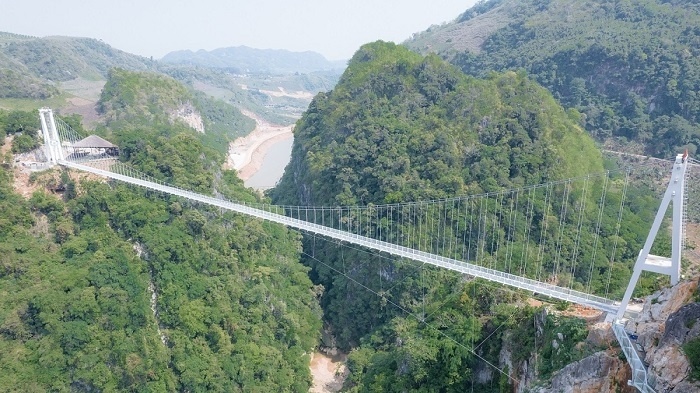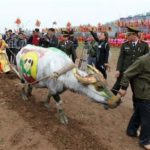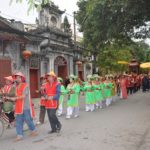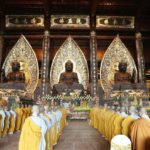Located at a height of 1,080m above sea level, Moc Chau District is locally known as Muong Sang, which means “a cold land blanketed in fog all year round” in Thai ethnic language.
Each season in Moc Chau is endowed by nature with unique captivating beauty. Along with the flower seasons, which draw great interest from visitors, Moc Chau is also home to many attractive tourist sites.
Spring comes with valleys of blossoming plum gardens, then follows the blooming seasons of white bauhinia flowers, wild sunflowers, buckwheat flowers, and mustard flowers.
Popular destinations that are most visited by tourists to Moc Chau include the Ban Ang pine forests, Ban On Caves, Dai Yem Waterfall, Pha Luong Peak, the tea hill, and Na Ka Plum Valley.
Measuring 2.4 metres in width and 632 metres in length, 290 metres of which crosses the mountain cliff while 342m bends along the mountain side, the newly inaugurated Bach Long Bridge looks like a winding white dragon embracing the mountains and forests of Muong Sang. Its floor is made from super tempered glass imported from France.
Bach Long Bridge offers impressive panoramic views of spectacular mountain landscape. While looking down from the glass bridge, visitors will be thrilled with the view of a 150m deep abyss.
At the foot of the bridge sits Muong Mooc Cave, also known as Chim Than (God Bird) Cave, which is home to natural stalactites and stone sculptures featuring the life and production of ancient Thai ethnic group.
Bach Long is the third glass bridge in Vietnam, following Tinh Yeu (Love) Bridge, also in Moc Chau, and Rong May (Cloud Dragon) in Lai Chau Province.
Opening to visitors from April 30, Bach Long Bridge was declared the world’s longest glass bridge by Guinness World Records in late May. In addition, it has been recognised by the Guinness World Records (GWR) as the longest glass-bottomed cliffside path, measuring 327m, and by the World Record Association (WRA) as the world’s longest glass-bottomed bridge.









